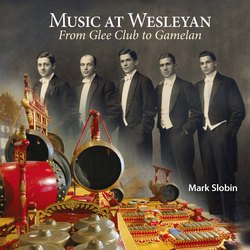Читать книгу Music at Wesleyan - Mark Slobin - Страница 9
На сайте Литреса книга снята с продажи.
ОглавлениеThe Class of 1876, 1874.
PART ONE:
The Early Decades of the “Singing College”
Daniel G. Harriman of the class of 1864 wrote a song called “Greeting Glee” especially for a trip described as follows in the 1940 edition of the Wesleyan Song Book:
In the summer of 1862, the first regular Wesleyan Glee Club started afoot from Middletown for a trip to the White Mountains. The manager, Henry L. Dickinson ’62, traveled a few hours ahead of the Club, making quick arrangements for lodging and concert hall at each evening’s stopping place. The final concert was given on top of Mt. Washington.
What a scene! A mere thirty years after the founding of Wesleyan, the elegantly-clad Glee Club is seen wandering on foot to the White Mountains, before the construction of Interstate 91 or the production of automobiles. Everywhere the singers stopped, people were glad to offer them food, lodging, and a concert hall to hear them sing. The foundations were being laid for the mythology of “The Singing College.” Decade after decade, the singing young men ascended not just Mt. Washington, but the heights of the academic song world, winning the national intercollegiate championship back to back in 1926 and 1927. Also two years in a row, 1962 and 1963, Richard Winslow’s men, combined with the Smith College women, went off to Mexico, courtesy of the State Department.
This heritage of song has largely faded from memory, but remains literally engraved at Wesleyan in the form of the plaques on the steps of North College. Everyone passes them by, and no one seems to notice them. A cleaning, specially done for this book, makes them more passably photogenic than before, though the names remain obscure to the Wesleyan community today. It is so striking that only songwriters are celebrated in so prominent a place on campus. No football heroes, debaters, presidents, or professors grace the steps.
The Glee Club was hardly the only outlet for undergraduate vocalizing. At all kinds of college events, the students raised their voices in song. Unfortunately, it is only the men we hear about; there is very little trace of women’s musicality in the period from 1872–1912 when Wesleyan was a coed college. The boys were always singing, it seems, since there were so many ritual events in the calendar for the couple or few hundred lucky members on campus each year. Below, a few choice examples of frolicking and solemnity evoke the importance of music at Wesleyan in the early decades, before the arrival of multicultural music and gender balance changed so much of the local resonance.
North College plaques honor Wesleyan songwriters, 2008.
